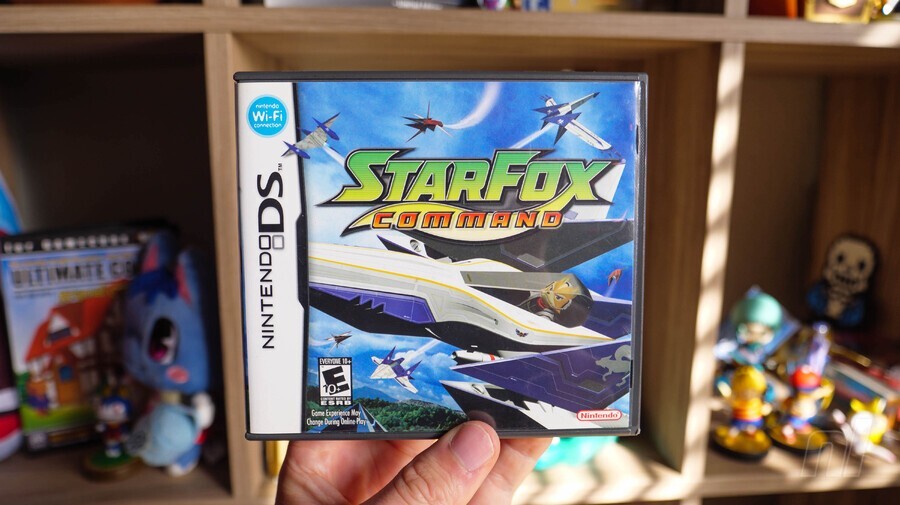Over the holiday season we’ll be republishing a series of Nintendo Life articles, interviews and other features from the previous twelve months that we consider to be our Best of 2020. Hopefully, this will give you a chance to catch up on pieces you missed, or simply enjoy looking back on a year which did have some highlights — honest!
This feature was originally published in October 2020.
Star Fox Command is 14 years old this year, a remarkable fact when you consider that, in the time that has elapsed since its release, we’ve only seen one all-new Star Fox entry – and even that was technically a remake of the N64 title, Star Fox 64 (and don’t even mention Star Fox Guard). While Nintendo’s attention is currently focused on franchises such as Animal Crossing, Zelda and (of course) Super Mario, it’s easy to forget that once upon a time, the Star Fox series was seen as a true demonstration of the potential of Nintendo’s home-grown hardware.
The original game, lest we forget, marked the start of Nintendo’s relationship with the third dimension and was powered by a revolutionary graphics chip which gave its host console, the SNES, a marked advantage over its rivals. Star Fox 64 required no additional hardware to make it sing, but rather showcased the incredible graphical prowess of the Nintendo 64 with visuals that arguably outclassed those seen on the PlayStation and Saturn. GameCube outings Star Fox Adventures and Star Fox: Assault could arguably be cited as the entries which caused the franchise’s star to falter a little; the former was an unrelated game by UK developer Rare which had the Star Fox IP forced upon it, while the latter was developed by Namco and, impressive opening level aside, was something of a disappointment thanks to its focus on ground-based missions and multiplayer.
This little history lesson hopefully gives some context to Star Fox Command’s release and the weight of expectation that rested on its diminutive shoulders. Following the misfires of Adventures and Assault, Fox’s first handheld adventure had added pressure; not only was it tasked with resorting faith in the franchise, but it was also launching on the Nintendo DS, a console that, at the time, was confounding industry expectation and introducing millions of players to the wonders of touch control.
 with Shigeru Miyamoto (second left) and Q-Games staffers. That’s seasoned games journo Chris Kohler photo-bombing on the right” width=”900″ height=”600″ data-original=”https://images.nintendolife.com/1f9c7f0aefed4/dylan-cuthbert-left-with-shigeru-miyamoto-second-left-and-q-games-staffers-thats-seasoned-games-journo-chris-kohler-photo-bombing-on-the-right.900x.jpg” /></a><figcaption class=) Dylan Cuthbert (left) with Shigeru Miyamoto (second left) and Q-Games staffers. That’s seasoned games journo Chris Kohler photo-bombing on the right (Image: Q-Games)
Dylan Cuthbert (left) with Shigeru Miyamoto (second left) and Q-Games staffers. That’s seasoned games journo Chris Kohler photo-bombing on the right (Image: Q-Games)While some fans may have felt a degree of trepidation when Star Fox Command was formally announced – especially after Nintendo had entrusted the previous titles to companies which had no prior association with the series – fears were allayed when it was confirmed that Kyoto-based Q-Games, headed by Dylan Cuthbert, would be involved. Cuthbert, as you’re probably aware, was part of the team that made the original Star Fox and its SNES-based sequel, the latter of which only saw the light of day with the release of the SNES Classic Edition in 2017.
Cuthbert parted company with Nintendo following the cancellation of Star Fox 2 and would join Sony America to create Blasto on the 32-bit PlayStation before returning to the company’s Japanese arm, where he developed the famous “Duck in a Bath” tech demo for the as-then-unreleased PlayStation 2. After contributing to the development of the Japan-only Ape Escape 2001, he left Sony and established Q-Games Ltd. in Kyoto in September 2001 – right on Nintendo’s doorstep.
While Q-Games was always envisaged as a platform-agnostic studio, Cuthbert wasted no time in striking up a working relationship with his former employer. “We had already approached [Nintendo] for a number of experiments and games, and had already developed Digidrive / Intersect with them,” he tells us. “There were also a number of fun experiments that had got canned by that point; stuff that used the Game Boy gyro, for example. Then [Shigeru] Miyamoto suggested that we do a concept demo for Star Fox on the upcoming DS, and we went away and spent a couple of months knocking up a really interesting ‘space elevator’ demo that felt just like the original Star Fox. We even totally revamped the look of the Star Fox characters and team, but that direction was dropped when we went into production and Takaya Imamura was assigned to produce the title.”
Miyamoto had, of course, worked alongside Cuthbert on the canned Star Fox 2, and the legendary designer wanted that particular title to be something of a touchstone for this new entry; he knew instinctively that Cuthbert was the right man for the job. “Miyamoto suggested it to us because he wanted the ideas in Star Fox 2 explored more and, of course, I had been heavily involved in that,” explains Cuthbert. “Not many other people knew anything about Star Fox 2 at that point in time! Even Imamura-san hadn’t been involved directly on Star Fox 2.”
It’s tempting to ask why Miyamoto chose to adopt a slightly different play style for Star Fox Command, especially as Star Fox 2 had never been seen by the wider public and the past two titles had displeased some fans by straying too far from the original ‘on-rails’ formula. Cuthbert thinks that the promise of new hardware – hardware which would come to change the way we play – was one of the key reasons. “The ideas in Star Fox 2 seemed interesting to Miyamoto to apply to the Nintendo DS with its two screens. He explained early on that the Star Fox franchise wasn’t about repeating the same game in sequel after sequel, but was a vehicle for exploring ideas in 3D gaming. Just like the early experiments we did in Star Fox 2 with 3D platforming that eventually helped shape Super Mario 64, he wanted us to try out new ideas and see what happened.”
It’s easy to forget just how groundbreaking the Nintendo DS was when it was first released. At the time of Star Fox Command’s development, touchscreen smartphones weren’t anywhere near as commonplace as they are now – neither were concepts such as voice commands, dual displays and wireless internet. Q-Games studio manager Takahashi Akito had joined the company fresh from university, and Star Fox Command was the first game he worked on; he recalls how the console’s innovative tech made the game a truly enticing debut project. “I remember feeling fresh and excited every day about the game design, which took advantage of the DS’ unique feel of freely controlling the direction of the aircraft with the stylus, rolling with a swipe, as well as features that hadn’t been seen in previous consoles.”
Rhodri Broadbent was another new Q-Games hire around the same time, having joined the company from UK studio Lionhead, where he had worked on Fable. He found the process “liberating”, adding that: “early on in Star Fox Command we were experimenting and prototyping a lot of ideas for game controls and cameras – some crazy, many wonderful. That period is one of the high points of my career, without question. I think it’s hard to remember now how much of a shift the DS was, but we were prototyping Command before the system had launched, so in those early days our own project was the only 3D-action touch-screen dual-screen gameplay example we had! It was an ‘anything goes’ time and of course, a lot of great ideas had to be discarded in order to shift into production mode. I was responsible for programming the Arwing controls and I particularly liked one of those discarded modes, in which you could hold the stylus over an enemy to keep the camera locked onto it, and the Arwing would smoothly auto-pilot around it whilst you planned how to attack it, or studied the weak points. In fact, I was very pleased to see some of the things we tried out but couldn’t use were incorporated in some form into Star Fox Zero.”
“I especially liked using the DS Rumble Pak for haptic feedback when you drew routes through meteor fields,” Cuthbert adds. “We did iterate a lot on how to get the strategy and route creation to be as fun as possible. The sound guys at Nintendo suggested using the player’s own voice or sound, but cut up, for all the voices of the characters; because this was a smaller handheld title, it was decided by Nintendo early on we wouldn’t have the cartridge space for lots of real voice samples, unfortunately, so we found a fun technical compromise.”
As is the case with many of Nintendo’s outsourced projects, there was a close relationship between Q-Games and its Kyoto neighbour. “Imamura-san was in the office every day working on it with us,” remembers Cuthbert. “Miyamoto and [Katsuya] Eguchi came to visit the team, too. However, all the development work was done by Q-Games with the exception of the music and audio engine.”



















 © Nintendo Life
© Nintendo Life © Q-Games
© Q-Games









